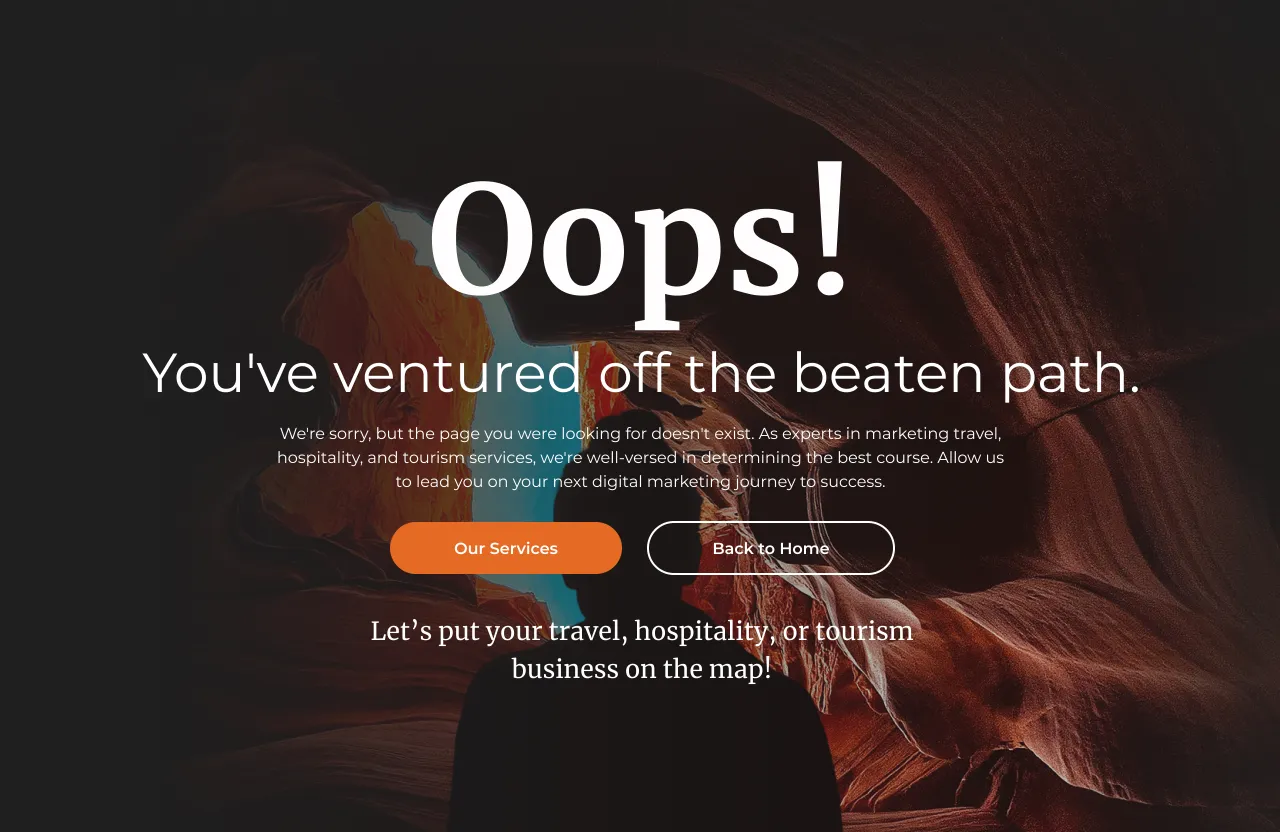Have you ever been browsing the internet and come across a page or link that led you to a 404 Not Found error? It might have looked something like this.

Maintaining a website takes time. The more pages a site has, the more attention is needed. One page that often gets overlooked is the 404 error page.
A 404 error occurs when a user clicks on a broken or dead link. This could mean a few things – that the URL has changed, the page has been deleted, or it never existed, or then that there was a misspelling in the URL. A generic 404 error page template exists and gets activated for every website built. But a personalized page has its benefits including an improved user experience on your website and reduce bounce rates. It can also strengthen your brand’s image.
Let’s explore the top three reasons why creating a custom 404 error page is a smart move to make sooner rather than later.
1. Improved User Experience
When visitors encounter a 404 Error page, they often get frustrated and may close the website altogether. This error might happen because of something beyond your control, like a typo. However, you can turn this negative experience into a positive one. How? Present them with an engaging message that lightens the mood. Show that you care about their satisfaction by including relevant links to your site. A well-designed 404 page consists of the following:
- A clear statement informing users that the desired page is unavailable.
- Links to important pages on your site like home, contact us, or other relevant pages.
- Main header and footer navigation
It’s totally up to you to add a search bar if you want. However, it’s important not to send users away from a 404 error page to another site.
Making it easier for users to find what they’re searching for will encourage them to keep browsing and leave on a positive note.
2. Displaying Your Brand’s Identity
A customized 404 error page is an excellent chance to showcase your brand’s character and creativity. Instead of generic broken link text, use humor, captivating visuals, or brand-specific messages to help turn the situation around. Whether it’s a funny image or a sympathetic message recognizing their disappointment, surprising users can make them more forgiving of errors.
Take a look at some inventive examples of 404 error pages below.






3. SEO Advantages
Although it might not be obvious, a custom 404 error page can positively impact your website’s search engine optimization (SEO). Enhancing user experience and providing useful links and information on your custom error page encourages visitors to stay longer. It improves engagement metrics and overall SEO performance. Plus, a well-crafted custom 404 page indicates that your website is well-maintained and focused on users’ needs, boosting its credibility with search engines like Google.
Spending resources and effort on a personalized 404 Error page to represent your brand has numerous benefits. It effortlessly conveys to site visitors that their needs matter, making them more likely to return. It also presents a unique branding opportunity and helps with SEO rankings, something all website owners prioritize.


